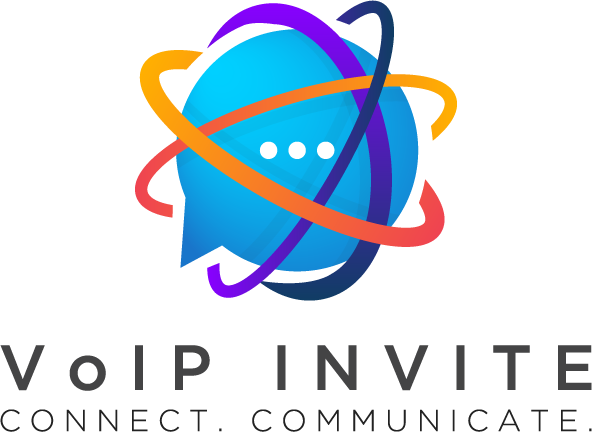Companies have been using traditional PBX systems requiring separate networks for voice and data communications for the past 5 decades. With the new VoIP technology’s disruptive revolution businesses are rapidly moving on to VoIP PBX systems that manage both data and voice thereby delivering a huge advantage by converging voice and data.
Voice over Internet Protocol (VoIP) is a methodology and group of technologies that are used to deliver voice communications and media sessions over Internet Protocol (IP) networks, the biggest of which is the Internet.
The steps and principles involved in originating VoIP telephone calls are similar to traditional digital telephony and involve signaling, channel setup, digitization of the analog voice signals, and encoding. The difference is when it comes to transport, instead of being transmitted over a circuit-switched network, however, the digital information is packetized, and transmission occurs as Internet Protocol (IP) packets over a packet-switched network. With VoIP, voice data is digitally encoded using µ-law or A-law Pulse Code Modulation (PCM). The voice data can then be compressed if necessary and sent over the network in User Datagram Protocol (UDP) packets. Standard TDM telephony sends voice data at a low constant data rate. With VoIP, relatively small packets are sent at a constant rate. The total overall rate of sending data is the same for each kind of telephony. The advantage of VoIP is that one high-speed network can carry the packets for many voice channels and possibly share with other types of data at the same time (for example, FTP, HTTP, and data sockets). A single high-speed network is much easier to set up and maintain than a large number of circuit switched connections (for example, T1 circuits). The User Datagram Protocol (UDP) is used to transmit voice data over a VoIP network. UDP is a ‘send and forget’ protocol with no requirement for the transmitter to retain sent packets should there be a transmission or reception error. Real Time Transport (RTP) is used with VoIP to provide a method of handling disordered and missing packets and makes the best possible attempt to recreate the original voice data stream, comfort noise is intelligently substituted for missing packets.
Session Initiation Protocol – SIP
Session Initiation Protocol (SIP), is an application-layer control (signaling) protocol for creating, modifying, and terminating sessions with one or more participants. These sessions include Internet telephone calls, multimedia distribution, and multimedia conferences. SIP invitations used to create sessions carry session descriptions that allow participants to agree on a set of compatible media types. SIP makes use of elements called proxy servers to help route requests to the user’s current location, authenticate and authorize users for services, implement provider call-routing policies, and provide features to users.
SIP is now the standard for VoIP services. Many businesses are now replacing outdated Phone circuits with SIP, lured by the range of benefits the new technology offers. Legacy phone lines sets up a circuit switched connection to allow voice data to be transmitted between callers. SIP uses the Internet and allows large phone networks to be established using an Internet connection. This reduces the amount of infrastructure that businesses need to invest in or rent. SIP systems are flexible so any number of channels can be added to accommodate business growth. Traditional phone systems come in set number of channels, imposing a significant expense on companies as they expand. In addition, SIP facilitates cheaper VoIP calls than traditional phone lines do. In the plain old telephone service/public switched telephone network (POTS/PSTN) way of doing telephony, you get additional lines as you need to increase your capacity. In the VoIP way, you can upgrade your bandwidth on your dedicated line to increase capacity. There are several disadvantages for companies that use POTS/PSTN rather than VoIP telephony. POTS-related lines are leased from a carrier. Just leasing a single line incurs added expenses. For example: Each line usually has a nominal startup charge, Each line has a monthly recurring access charge, for each POTS line, the company must pay monthly recurring usage charges. All recurring charges are based on a rate per minute per line. When you add up all the minutes from every line in operation at each of your company’s locations, the monthly costs can soar.
How does SIP Trunking work?
Session Initiation Protocol is a system that was created to launch and end VoIP calls. A SIP trunk is an online system for linking a business’ IP-based PBX to an Internet phone service company such as VoIPInvite. Rather than terminating the trunk at the IP-PBX, companies terminate the trunk at a SIP-capable session border control system, which offers extra security. By simplifying voice hardware, a SIP trunk can support a business’ telephone and multimedia requirements over the Internet and eliminate the need for costly and cumbersome legacy hardware. Analysts say that companies that embrace SIP trunking can save up to 60% on their current traditional telephony trunking costs.
VOIP Codecs and Compression
Compression software (called a codec) encodes the voice signals into digital data that it compresses into lighter packets that are then transported over the Internet. At the destination, these packets are decompressed and given their original size and converted back to analog voice again, so that the user can hear. Codecs are not only used for compression, but also for encoding, which, simply said is the translation of analog voice into digital data that can be transmitted over IP networks.
VoIP codecs supported by VoIPInvite
G.711
G.711 is an ITU-T standard for audio companding. It is primarily used in telephony. The standard was released for usage in 1972. G.711 is a standard to represent 8 bit compressed pulse code modulation (PCM) samples for signals of voice frequencies, sampled at the rate of 8000 samples/second. G.711 encoder will create a 64 kbit/s bitstream requiring a minimum of 128 kbit/s of bandwidth for a single 2 way communication channel.
G.729
G.729 is an audio data compression algorithm for voice that compresses voice audio in chunks of 10 milliseconds. DTMF or fax tones in this method use G.711 or out-of-band methods to transport these signals. G.729 is mostly used in Voice over IP (VoIP) applications for its low bandwidth requirement. Standard G.729 operates at 8 kbit/s, but there are extensions, which provide also 6.4 kbit/s and 11.8 kbit/s rates. Also very common is G.729a which is compatible with G.729, but requires less computation.


